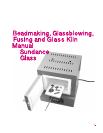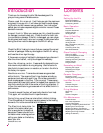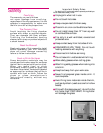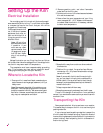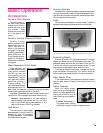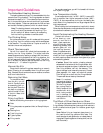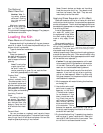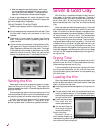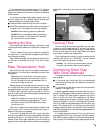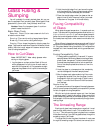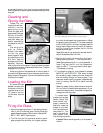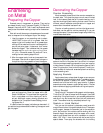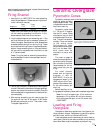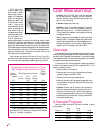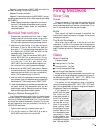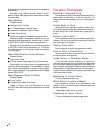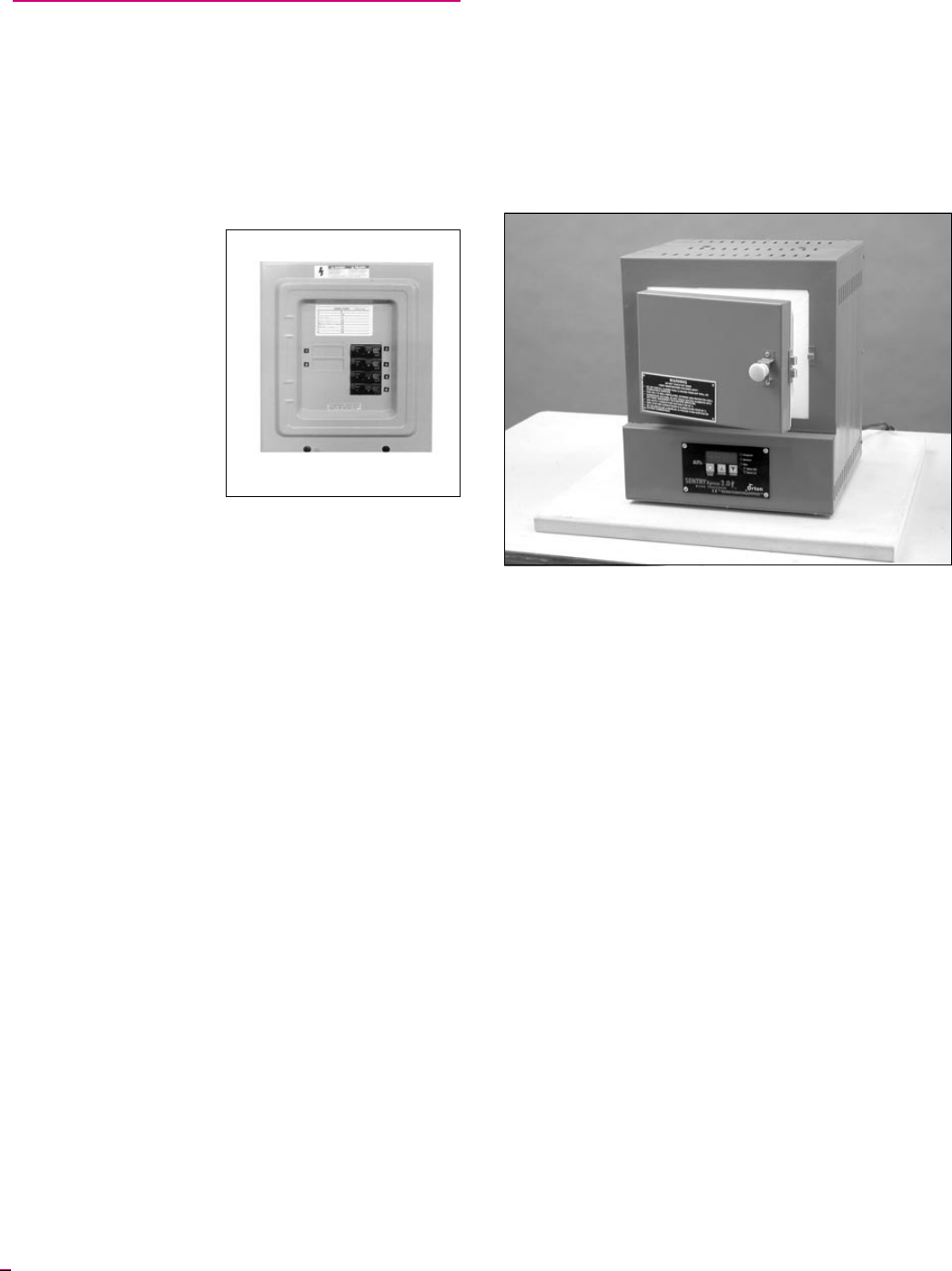
Setting Up the Kiln
Electrical Installation
You must plug your kiln into a circuit that no other appli
-
anceuses whilethe kilnisfiring. Turnoff thecircuitbreaker
or unscrew the fuse for the circuit that your kiln will be
plugged into.Check tosee
ifother appliancesshutoff
too. If that circuit powers
appliances that must re
-
main on while the kiln is
firing, plug yourkiln into a
different circuit.
Note: 120 volt kilns:
avoid extension cords
if possible. If you
must use one, never
use one smaller than
12 gauge and longer
than 20 feet. Never
plug it into a ceiling
outlet!
Voltage fluctuation can vary firing time from as little as
half to more than twice the average time. If the voltage is too
low, the kiln may never reach full temperature.
The receptacle must have a separate safety grounding
wire. This protects you from serious electrical shock.
Changing the cord plug will void your warranty!
Where to Locate the Kiln
1 Placeyour kiln in awell ventilated, covered and pro
-
tected area such as the garage, basement, utility or
hobby room.
Note: Somepeople keeptheir kilnoutside ona cov
-
eredpatio. Thisis okaysolong asthekiln isnot sub
-
jected to excessive humidity. We recommend good
ventilation. However, some materials, such as silver
clay, may not need special ventilation.
2 Remove gasoline, paint, and other flammable
materials from the kiln room.
3 Provide a minimum of 12inches clearance between
kiln and the closest wall.
4 Never allow the room temperature of your firing
room to exceed 100 - 110° F. Measure the tempera
-
tureabout 3feetfromthe kiln.Ifnecessary,use fans
to lower room temperature.
5 Keepthekiln awayfromcurtainsor othercombusti-
ble materials.
6 Position kiln on a level, fire-proof surface. We rec-
ommend an18” x 18” pieceof sheet metalor a large
ceramic kiln shelf.
Note: If you are with the kiln at all times during fir
-
ing, you can place it directly onto a workbench or
kitchen table. A fire-proof surface is ideal, though,
because it providesa safe place to lay hotshelves re
-
moved from the kiln.
7 Keep unsupervised children away.
8 Keepthepower supplycordawayfromthe kilncase.
There is little danger of serious burn from accidental
contact if you exercise the same caution you would use with
an electric iron.
Transporting the Kiln
Some people take their kilns to seminars or on vacation.
The easiest way to transport the kiln is to use the original
packing materials.
If you no longer have the packing materials, transport the
kiln on its back with the door facing up. Place a thin sheet of
foamcushioning betweenthe doorand thefiringchamber to
prevent rubbing. Avoid subjecting the kiln to excessive vi
-
bration during travel.
4
Place the kiln on a fire-proof surface, such as a large ceramic kiln shelf.



